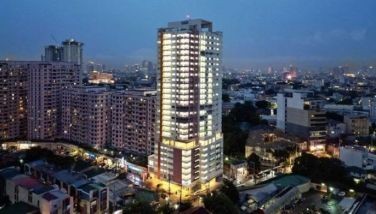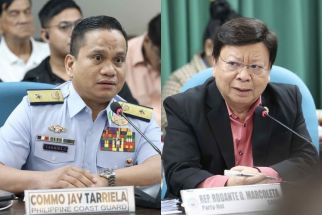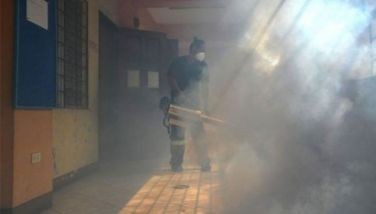House wants inquiry into government disaster preparedness
MANILA, Philippines - The House minority bloc filed a resolution yesterday calling for an inquiry into the preparedness of the government to address natural and man-made disasters.
Opposition lawmakers filed House Resolution 1100 directing the House committee on national defense and security to look into the preparedness of the national government, including the National Disaster Risk Reduction Management Council (NDRRMC), in responding to emergencies and natural calamities.
Zambales Rep. Milagros Magsaysay expressed doubts on the government’s capability to respond to calamities similar to the powerful earthquake that hit Japan.
She said it appeared the government is not capable of implementing provisions of Republic Act 10121 that mandates the state to “develop, promote and implement a comprehensive national disaster risk reduction and management program that aims to strengthen the capacity of the national government and the local government units (LGUs), together with partner stakeholders, to build the disaster resilience of communities and to institutionalize arrangements and measures for reducing disaster risks, including projected climate risks, and enhancing disaster preparedness and response capabilities at all levels.”
Pampanga Rep. Aurelio Gonzales made a separate call to the government to conduct mandatory structural audit of all public buildings especially those built before 1992.
“The audit is to determine if they are still safe or can withstand strong earthquake,” Gonzales said, adding the checking should start with the Batasan Pambansa and Senate buildings.
He said the Batasan Pambansa building, which is home to the House of Representatives, is located less than one kilometer from the Marikina fault line and may be vulnerable to severe damage in the event of a strong earthquake.
The Senate building, on the other hand, sits on reclaimed area and is therefore prone to more violent tremors, he said.
“Without sounding like an alarmist, I hope the House and Senate leadership will take this call seriously and order the Department of Public Works and Highways, with the assistance of Association of Structural Engineers of the Philippines and the Philippine Institute of Civil Engineers, to immediately conduct an inspection of all public buildings to determine their structural soundness, starting with our very own Batasan Pambansa and Philippine Senate,” Gonzales said.
AFP employs belt tightening measures
Meanwhile, the Philippine Navy (PN) and the Philippine Air Force (PAF) are now enforcing stringent energy conversation (Enercon) measures to cushion the projected impact of the prolonged Middle East and the Japan crises into its territorial defense and internal security operations.
Considered as the AFP special services, the Navy and the Air Force are directly engaged in day-to-day air and sea patrol of the country’s air and territorial waters.
As gathered, the two services are still depending on old fuel stocks in their inventory to send planes and patrol ships out on territorial patrol.
However, once these old fuel stocks are depleted, the defense establishment would be forced to purchase the Navy and the Air Force fuel requirements at higher prices due to the prolonged political and civil strife in oil producing countries like Libya and Bahrain.
“We are enforcing enercon measures to save energy as well as to limit our fuel consumption in all our on and offshore activities,” Navy spokesman Capt. Giovanni Carlo Bacordo said.
These measures, he said, are being done to offset the projected impact of the skyrocketing fuel costs in the world market caused by the prolonged political turmoil in the Middle East on the Navy’s operational budgetary requirements.
As per command directive issued by Navy chief Rear Admiral Alexander Pama, all Navy personnel manning offices that do not require a 24-hour watch are now under orders to leave these offices after office hours.
“After 5 p.m., all our personnel deployed to these offices must be gone. On shore, we only conduct intelligence-driven operations,” Bacordo said.
He said that vessels arriving at base and naval stations are required to hook up to land-based power source in order to conserve fuel consumption of vessel generators.
Average fuel consumption of the Navy’s lone 78-foot patrol gunboat per day while docked at pork is 192 liters for its generators. It needs 9,792 liters of diesel each day to keep its main engine and generator running while on patrol.
“We at the Navy really have enforced cost-cutting measures to at least cushion the impact of the world fuel crisis on our daily operation,” Bacordo said.
Col. Ernesto Okol, Air Force spokesman, on the other hand, said that while the crises in the Middle East and Japan have yet to impact on their air and land operations, they too have been instituting moves to save resources in order to keep air and land assets flying and running.
“Our command directive as issued by our commander, Lt. Gen. Oscar Rabena, is to save our precious resources,” Okol said.
BFP lacks rescue tools
In a related story, the Bureau of Fire Protection (BFP) is lacking necessary equipment, tools and accessories for rescue operations in case of an emergency like earthquake.
A document obtained by The STAR revealed that there were at least 101 kinds of equipment, tools and accessories necessary in rescue operation but BFP has only nine available, including fire coat, fire trousers, light rescue vehicle, desk top computer and automatic voltage regulator.
Although some tools were available, the report said there was limited supply, like fire boots, rubber boat with outboard motor, flathead ax, heavy-duty bolt cutter, gasoline powered chainsaw.
The report also said that the BFP has limited supplies of chemical detector, collapsible safety cones, large and medium demolition hammer, flood lights, multi-gas detector, hydraulic cutter, hydraulic spreader and infrared thermal imaging camera.
The report also noted that firemen need more megaphones, oxygen sets, different sizes of rescue pulleys and rope rescue harness.
The agency also needs, among others, self-contained breathing apparatus; first aid kit with bag, squad tents, portable scuba refilling machine, rubber gloves and rubber boots.
The BFP does not have rescue belt, rappelling and knitted gloves, waterproof rubber boots, elbow and kneepads, medium and heavy rescue vehicle with crane, motorcycle; 10-wheeler water tanker with pump; command vehicle; moving and still camera, long range two-way handhelds.
The BFP does not also have chipping hammer set, claw wrecking bars, military-type compass; cushion bag for emergency jumpers, and cutting torch set.
The BFP reports said that there is a need to acquire supplied air breathing apparatus with umbilical system, telescope, and vests.
Interior Secretary Jesse Robredo admitted the BFP is lacking basic equipment but he pointed out that most of its personnel have trained abroad. - Cecille Suerte Felipe, Jaime Laude
- Latest
- Trending





























